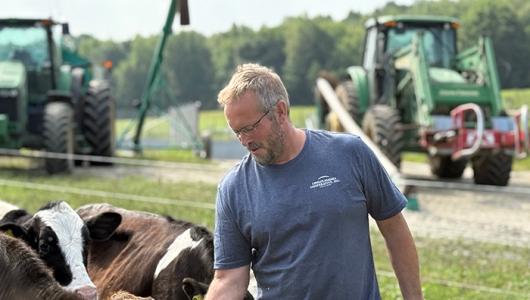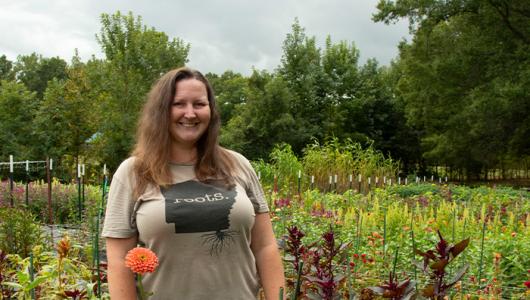It’s not every day you see a thriving farm on a former football field, watch children excitedly eat their veggies in the schoolyard where they planted them, or meet a man who left the business world to start an urban farm in his own backyard.
Join us on a video tour of three urban farms in Dallas, Texas, where we’ll meet farmers who are rolling up their sleeves to grow healthy food for their local communities.
Farming Over Football… and Winning
The state of Texas is synonymous with football. So, it was a radical step when Dallas’s Paul Quinn College transformed their football field into an organic fruit and vegetable farm. The We Over Me Farm might be the most unusual farm you’ve ever seen, complete with scoreboard and goalposts.
Students who work on the farm gain experience with vegetable growing, marketing and business skills, education and outreach on health and nutrition, and teamwork. They also learn about giving back. A large amount of the produce is donated or sold at cost to the local community, which is in a federally designated food desert where access to healthy food is limited.
The produce also goes to community members, the college, and restaurants and grocers throughout Dallas, including Café Momentum, a Dallas restaurant that provides job training to youth coming out of juvenile facilities.
From Computers to Plants
Garland Hampton started Earth Healthy farm, located in the Dallas metroplex, after he left a long career at IBM. He said, “In my heart, I wanted to do something that was good for the environment, something that would help people... and make a difference in my neighborhood.”
In his high tunnels, which he obtained with help from the USDA’s Natural Resources Conservation Service, he is growing okra so tall that they touch the roof. These high tunnels help him extend the growing season, which ensures local healthy produce for more months of the year.
He also uses vermiculture and composts food waste from local restaurants to build healthy soil. “One thing I’ve learned through all of this is that a healthy plant doesn’t come from having a green thumb, it comes from having healthy soil,” Garland said.
The Next Generation – Farming and Eating
The farming program at Moss Haven Elementary is teaching kids all about farming and healthy food. The farm features 23 raised beds where each class grows and harvests their own crops. USDA helped the school install a rainfall catchment system to harvest rainfall to water the crops.
Half of the food harvested is donated to local food banks, and the rest is served in school lunches and sold at the Dallas Farmers Market. The farm also is integrated into the school’s science curriculum.
The students repeatedly tell him that they think all people are born as farmers and it’s about providing the opportunity to explore it.
USDA Assistance
USDA’s Natural Resources Conservation Service helps all kinds of farmers – both in the country and the city. Urban farms most often need help with things like drip irrigation, high tunnels, soil health practices, and pollinator habitat.
The Bounty
In the end, these urban farmers say it’s about watching children eat tomatoes they grew themselves. Or, seeing college students work together with their hands in the soil. Or, most importantly, providing healthy fruit and vegetables to neighborhoods that lacked access to fresh produce.
“These urban operations that I see are small in size, but great in stature,” said Michael Brooks, the NRCS district conservationist, who has helped all these farms.
Learn more about urban agriculture and high tunnels.
Suzanne Pender is a communications coordinator for USDA’s Farm Service Agency, Natural Resources Conservation Service, and Risk Management Agency. She can be reached at suzanne.pender@wdc.usda.gov.


